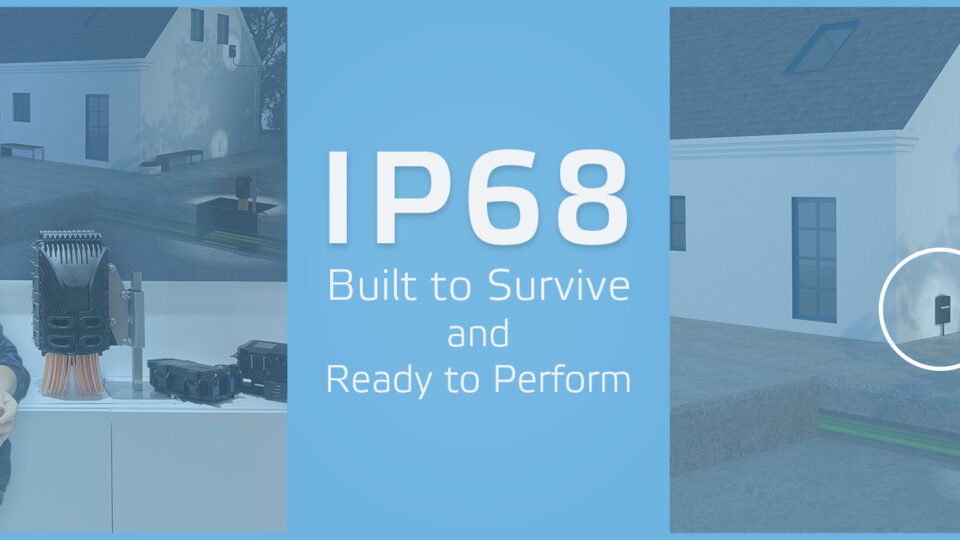
Making a match of customer installs and social distancing
During spring 2020, the passive business has been anything but. The prevalent circumstances have driven demand towards self-install kits, which almost entirely remove the need for operators to visit homes and come in contact with the end-users, freeing up all parties from the close contact-related risks and general disruption.
Installation products are the network items that are required to make the customer connection and typically include items such as coax fly leads, signal splitting devices, connectors, and UTP cables. They are often the end-components of the operator’s cable installation process. While connecting these components may be the simplest part of the endeavour, they often require significant amounts of time and resources to carry out.
In a traditional installation situation, the operator builds a network outside of a residence. A technician then brings a connection into the house or up to each apartment where he would install the end-components. In addition to the straightforward installation, this process requires coordination and scheduling with tenants and landlords.
Self-install kits take this entire process out of the equation by allowing the end-user to take the operator’s connection point and self-install the remaining connections. The advantage it gives to the operator is a better allocation of time and resources, freeing up technicians to focus on more important tasks that require more technical skill and expertise. Hours of technician-intensive labour can be replaced by smartly designed self-install kits that are dispatched to end-users from the operator’s warehouse. In the current climate the precious resources can be better allocated to looking after the networks to maintain reliability and customer satisfaction.
The skill level required for installation is not dissimilar to any other home electronics installation, which modern DIY-oriented users are well accustomed to. The kit contains step-by-step instructions and all the relevant tools required for installation. Naturally, operators don’t wish for the customer to go get a large wrench or a huge pair of pliers from the garage and risk wrecking the components. Everything that the customer needs is included in the box and all of the components come with a guaranteed level of quality, making sure that everything snugly fits into place and operates reliably. In addition the install process becomes quicker overall and thus improves customer satisfaction.
Of course if a customer is not willing to perform a self-install then the operator can dispatch an engineer to perform the work to ensure the customer is well supported and happy.
House visits are becoming a thing of the past
The 2020 pandemic will undoubtedly have a societal change where people will be less willing to have strangers come into their homes for nonessential visits.
In the current climate, operators want as few trips out to customers’ properties as possible. The 2020 pandemic will undoubtedly have a societal change where people will be less willing to have strangers come into their homes for nonessential visits. Self-install kits have the potential of being an ideal business model for this new era.
Regardless of the current special circumstances, our experience over two years tells us that more and more end-users are happy to install the items themselves. Technicians are often allocated a limited amount of time for each install, so the finer cosmetic related requests cannot always be carried out. An increasing amount of users prefer to have full control over what is installed in their homes, and where. They prefer to do it at their own pace and according to their own exacting design and aesthetic considerations.
Made to measure, delivering a branded customer experience
Another benefit of Teleste’s self-install kits is that they are fully tailorable to the needs of each operator, who often have different requirements depending on the type of network that they have built and the type of services they deliver over it. But fundamentally, no matter what the included components are, we have them. Not only can the contents of the install kits be tailored to the needs of different operational requirements, but the packaging itself can also be fitted for a branded customer experience. The packages can also be tuned to take into account our customer’s environmental policies and recyclability needs.
Fundamentally, self-install kits save the operator from sending a technician to go inside the homes, which can save truck roll and countless hours of labour that could be used more productively. For end-users, the key benefit is removing an unnecessary disruption to their daily lives and giving a timely installation. And this is something that we can all surely relate to.
Robert Wilkins
Robert Wilkins
I am leading the Passives & Indoors product management activities at Teleste. See my LinkedIn for more information.



